Wildlife crime is one of the greatest challenges facing conservation, and one of the conservation tech world's biggest areas of innovation. With new ideas and solutions constantly being put forth to track and protect species targeted by poachers, manage protected areas and support rangers, and combat the growing online market for illegal wildlife products, the engineers and conservationists working to solve wildlife crime's many challenges rely on tools like machine learning, biologging, camera traps, acoustic monitoring, drones, mobile apps, and more.
This wide variety of overlapping technology makes our Wildlife Crime group a potential melting pot for many of our other communities, and makes it an especially exciting place to find collaborators working in different tech spheres to meet a common goal. Whether you're a camera trap expert looking for information on thermal vision to spot potential poachers, a machine learning expert with the skills to analyze acoustic data for gunshots, or a protected area manager seeking the latest integrated mobile tools, this group can connect you with the right members of our community!
Below, you'll find WILDLABS resources and conversations to help you understand how different technologies are being put to work in the fight against wildlife crime, and what conservation tech practitioners need for these tools to be effective.
Three Tutorials and Videos for Beginners:
- How do I use AI to fight wildlife crime? | Lily Xu, Tech Tutors
- WWF Wildlife Crime Technology Project | Eric Becker, Virtual Meetups
- SmartParks | Laurens de Groot, Virtual Meetups
Three Forum Threads for Beginners:
- Snare detection technologies | Rachel Kramer
- Tools for conservation management | Chris Muashekele
- Looking for Intelligence Database Software | Dexter Oelrichs
Three Articles for Beginners:
- Using AIS data to investigate the world's fishing ports, Max Schofield
- How do Wildlife Crime Experts view Remote Sensing Technologies used to Combat Illegal Wildlife Crime?, Isla Duporge
- Metal Detecting Sensors for Anti-Poaching, Sam Seccombe
Join this group now to get to know our community and start discussing solutions and ideas together!
Header photo: © Frank af Petersens/Save the Elephants
No showcases have been added to this group yet.
WILDLABS & Wildlife Conservation Society (WCS)
I'm the Bioacoustics Research Analyst at WILDLABS. I'm a marine biologist with particular interest in the acoustics behavior of cetaceans. I'm also a backend web developer, hoping to use technology to improve wildlife conservation efforts.





- 40 Resources
- 38 Discussions
- 33 Groups
I'm a software developer. I have projects in practical object detection and alerting that is well suited for poacher detection and a Raspberry Pi based sound localizing ARU project


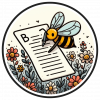
- 0 Resources
- 432 Discussions
- 7 Groups
- @TaliaSpeaker
- | She/her
WILDLABS & World Wide Fund for Nature/ World Wildlife Fund (WWF)
I'm the Executive Manager of WILDLABS at WWF



- 23 Resources
- 64 Discussions
- 31 Groups
- 0 Resources
- 0 Discussions
- 10 Groups
- @RobynneKotze
- | Dr
Conservation Director - Conservation of Natural Ecosystems Trust (CONNECT)
- 0 Resources
- 1 Discussions
- 7 Groups
I created Snappy Mapper to make gathering geospatial data more accessible for everyone.

- 0 Resources
- 5 Discussions
- 12 Groups
- @Aurel
- | She/Her
Looking to reconcile biodiversity conservation and finance.


- 2 Resources
- 1 Discussions
- 10 Groups
Natural Solutions

- 0 Resources
- 17 Discussions
- 10 Groups
- 0 Resources
- 0 Discussions
- 7 Groups
- @och3k
- | she/her
- 0 Resources
- 0 Discussions
- 7 Groups
- @ahmedjunaid
- | He/His
Zoologist, Ecologist, Herpetologist, Conservation Biologist





- 74 Resources
- 7 Discussions
- 25 Groups
- @alexrood
- | she/her
WILDLABS & World Wide Fund for Nature/ World Wildlife Fund (WWF)
I'm the WILDLABS Communications and Community Management Associate Specialist at WWF-US





- 149 Resources
- 95 Discussions
- 6 Groups
Please help us by participating in a MSc research project on what you consider to be 'evidence' in your work in conservation.
19 June 2025
Careers
Strategic Protection Of Threatened Species (NGO) is looking for engineering interns at the Dinokeng Game Reserve, South Africa
6 February 2025
The worst thing a new conservation technology can do is become another maintenance burden on already stretched field teams. This meant Instant Detect 2.0 had to work perfectly from day 1. In this update, Sam Seccombe...
28 January 2025
The Zoological Society of London's Instant Detect 2.0 is the world's first affordable satellite connected camera trap system designed by conservationists, for conservationists. In this update, Sam Seccombe describes the...
21 January 2025
The Connected Conservation is thrilled to announce our award's third round in collaboration with the Airbus Foundation. This award champions the use of cutting-edge satellite imagery to tackle biodiversity loss and...
30 September 2024
IWT Challenge Fund Evidence grants, ranging from £20,000 to £1,500,000, is a UK government grants scheme that provides support to innovative and scalable projects to reduce pressure on wildlife from illegal trade and,...
20 August 2024
WILDLABS is partnering with FLIR to give away a FLIR ONE Edge Pro to 5 community members.
26 June 2024
Wildlife Drones was deployed by Zoos Victoria in a trial project tracking captive-bred Eastern Barred Bandicoots that were tagged and released into the wild
14 June 2024
WildLabs will soon launch a 'Funding and Finance' group. What would be your wish list for such a group? Would you be interested in co-managing or otherwise helping out?
5 June 2024
Now accepting applications for two $15,000 grants to help protect wildlife through cutting-edge, technology-driven efforts
3 June 2024
The IEF's Elephant Conservation and Research Funding Support Program has opened a call for applications. Average grant size is $15K, whereas the IEF funds 20 to 25 projects per year.
22 May 2024
Do you have photos and videos of your conservation tech work? We want to include them in a conservation technology showcase video
17 May 2024
September 2025
July 2025
42 Products
1 R&D Projects
42 Organisations
Recently updated products
Recently updated R&D Projects
Recently updated organisations
| Description | Activity | Replies | Groups | Updated |
|---|---|---|---|---|
| Hi Robynne - I'm really glad you're interested. I'm running a cohort at the moment but have so far only covered some QGIS basics so you would be welcome to jump on from next... |
|
Wildlife Crime | 6 days 1 hour ago | |
| I create ocean exploration and marine life content on YouTube, whether it be recording nautilus on BRUVs, swimming with endangered bowmouth... |
|
Acoustics, AI for Conservation, Animal Movement, Camera Traps, Citizen Science, Drones, Emerging Tech, Marine Conservation, Sensors, Sustainable Fishing Challenges, Wildlife Crime | 1 month 2 weeks ago | |
| Hi WILDLABS Community! I have started mapping the project for the Gulf of America Dead Zone and here are some photos of the progress. In the last picture, I have... |
|
Climate Change, Marine Conservation, Wildlife Crime | 1 month 3 weeks ago | |
| Thank you for your reply, ChadI meant 10 as a whole, indeed. Perhaps you see your post in one group, but since it is tagged for all groups, I assumed you meant 10 in total.In your... |
|
Acoustics, AI for Conservation, Animal Movement, Camera Traps, Citizen Science, Climate Change, Community Base, Connectivity, Drones, eDNA & Genomics, Emerging Tech, Funding and Finance, Geospatial, Human-Wildlife Coexistence, Software Development, Wildlife Crime | 1 month 3 weeks ago | |
| HiThis is great! So just to double check - there is no way to join online? I would love to be part of this conference. Thanks, Els van Lavieren |
|
Community Base, Conservation Tech Training and Education, Data management and processing tools, Emerging Tech, Human-Wildlife Coexistence, Protected Area Management Tools, Wildlife Crime | 2 months 1 week ago | |
| Hi @iainmcnicol , welcome to WILDLABS! Thanks for posting this on here. I have shared with my colleagues at Fauna & Flora who have some experience (especially with the... |
|
Community Base, Geospatial, Protected Area Management Tools, Wildlife Crime | 4 months ago | |
| Hi Georg,Oh, that's a pity. But thanks anyway for checking!Really appreciate it!CheersMartina |
+10
|
Wildlife Crime | 2 months 4 weeks ago | |
| Hi Adam! Sounds like you have your work cut out for you. I have not used radar systems or AI systems for this sort of detection, but there are methods using change detection... |
|
AI for Conservation, Drones, Wildlife Crime | 3 months 3 weeks ago | |
| Great dear Travis,This is a great news and an opportunity to me and my local bee keepers. It really sounds very helpful.Here is my contacts:Email: muganyizi@pales.or.tz ... |
|
Climate Change, Conservation Tech Training and Education, East Africa Community, Funding and Finance, Human-Wildlife Coexistence, Wildlife Crime | 4 months ago | |
| You can also check out WWF's newly launched C2C: Conflict to Coexistence approach. It provides a framework and methodology for developing tailor-made human-wildlife conflict (HWC... |
+2
|
Wildlife Crime | 6 months ago | |
| Not a book, but a very real documentary:Stroop - Journey into the Rhino Horn War |
|
Wildlife Crime | 6 months ago | |
| Thank you so much for sharing! They seem to only state the official DFFE statistics nowadays. From my connections in SouthAfrica these numbers don't always seem to reflect... |
|
Wildlife Crime | 6 months ago |
Piloting a QGIS Course for Conservation Staff – Seeking Interest & Input
28 July 2025 1:05pm
7 August 2025 9:41am
Hi Emma, I would definitely be interested in this course too. Sign me up!
7 August 2025 1:49pm
Hi Robynne - I'm really glad you're interested. I'm running a cohort at the moment but have so far only covered some QGIS basics so you would be welcome to jump on from next Monday if that would work?
WEBINAR: Sound Decisions
5 August 2025 5:15pm
I WANT TO TELL YOUR STORY
29 June 2025 10:22am
Gulf of America Dead Zone Restoration
9 June 2025 9:49pm
21 June 2025 6:22am
Hi WILDLABS Community! I have started mapping the project for the Gulf of America Dead Zone and here are some photos of the progress.
In the last picture, I have included WILDLABS entities at random and I will be mapping them to the industry collaborators we are seeking.
I hope to have any interested parties please reach out and if you'd like to contribute your technology, wisdom, or just follow along, I appreciate it! Thank you
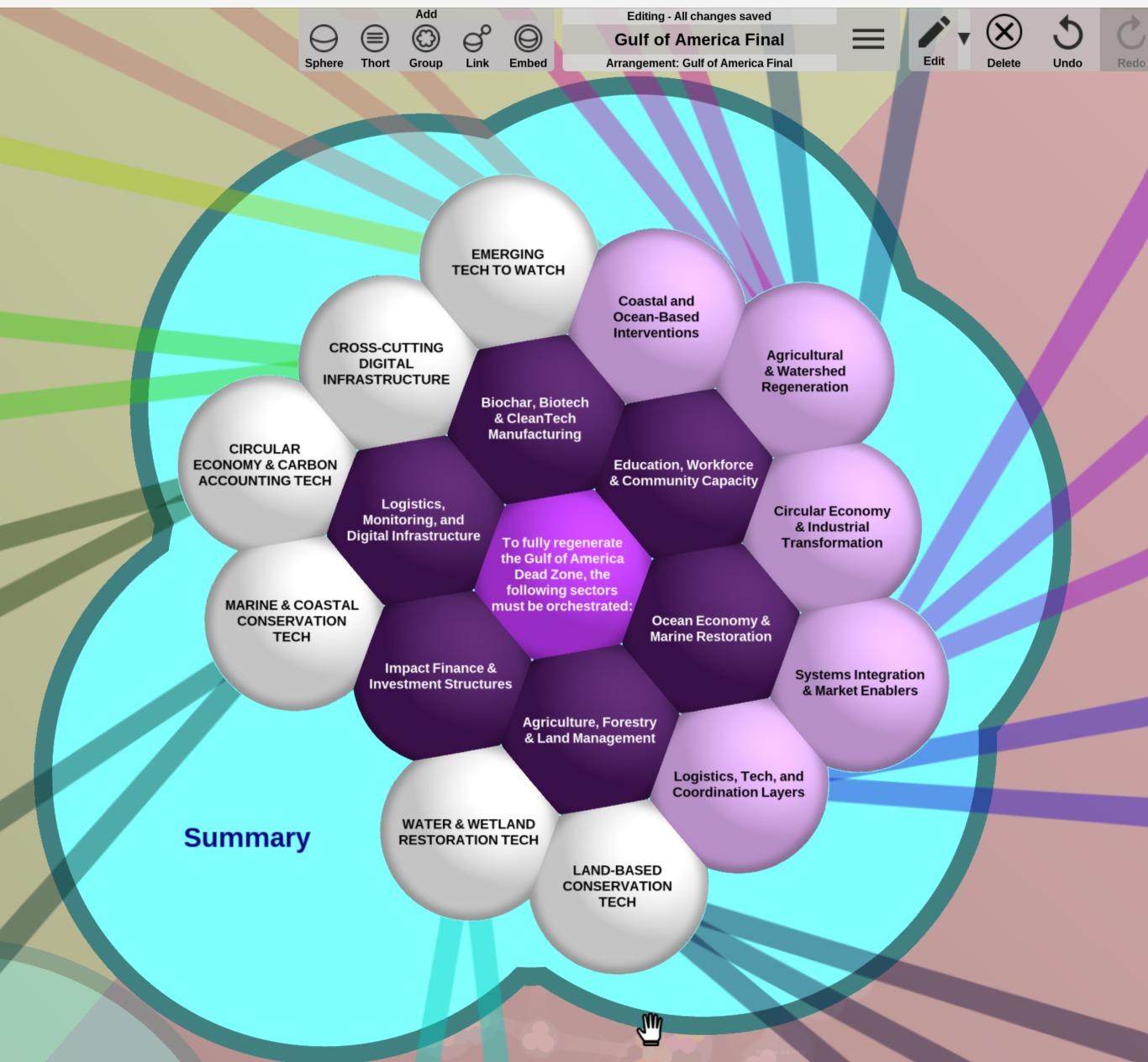
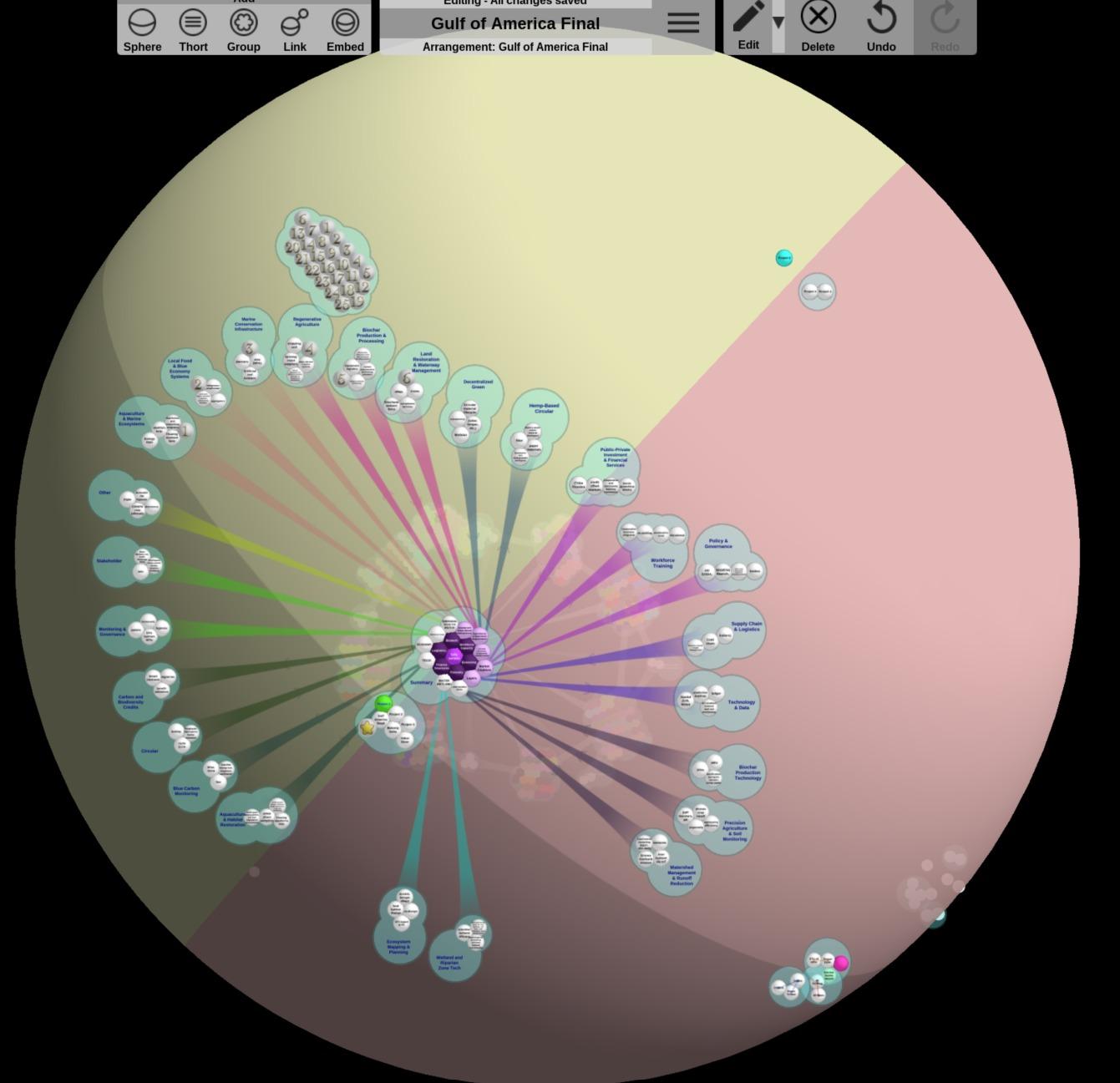
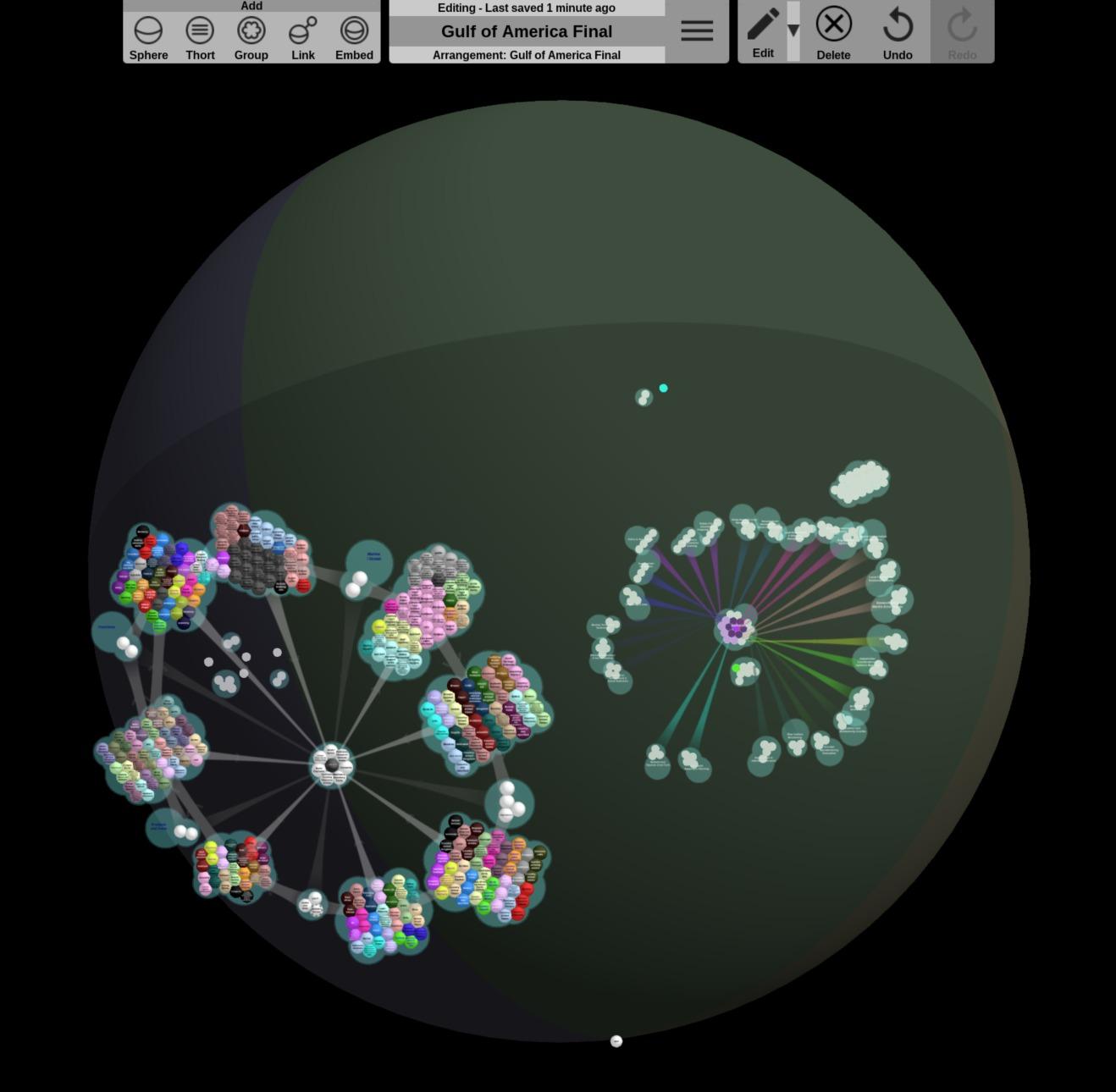
New Group Proposal: Systems Builders & PACIM Designers
18 June 2025 2:52pm
19 June 2025 9:08am
Hi Chad,
Thanks for the text. As I read it, PACIMs play a role in something else/bigger, but it doesn't explain what PACIMs are or what they look like. Now I've re-read your original post, I'm thinking, maybe I do understand, but then I feel the concept is too big ( an entire system can be part of a PACIM ? ) to get going within a WildLabs group. And you want to develop 10 PACIMS within a year through this group? Don't get me wrong, I am all for some systems change, but perhaps you're aiming too high.
19 June 2025 12:19pm
Hello again sir - PACIMs really mean 'projects' is the way I see it. Each part of the acronym can be seen as a project (if you have an assignment to do, you have a project really).
As for your query on 10 projects in 'this' group - I should ask for clarification if you mean particularly acoustics or in any group (I see now this is the acoustics thread after I selected all the groups for this post). If you are asking on acoustics, you're right - I am unsure on 10 as I am not too keen on acoustics yet. If you are asking 10 projects as a whole like 10 projects in the funding and finance group - I believe 10 to be a very reasonable number. Our projects we have co-created are for the most part replicable, rapidly deployable, quickly scalable, fundable through blended finance and more.
Thank you again for the feedback.
19 June 2025 1:43pm
Thank you for your reply, Chad
I meant 10 as a whole, indeed. Perhaps you see your post in one group, but since it is tagged for all groups, I assumed you meant 10 in total.
In your first post you explain PACIM stands for "Projects, Assignments, Campaigns, Initiatives, Movements, and Systems", so I understood it as more than just projects. Obviously, many things can be packed into a project or called a project, but then, what does it mean that 'Projects' is part of the list?
Well, if you think 10 projects is doable, then don't let me stop you.
Opportunity to participate in study on what counts as evidence in conservation
19 June 2025 11:11am
Apply for Free Access to Nature FIRST Conference (innovative solutions for biodiversity monitoring and human-wildlife coexistence)
22 May 2025 2:37pm
28 May 2025 4:20pm
Nice!
Thought I'd mention that Wildlife Security Innovations will have a booth there, demonstrating our new multi-camera, local AI camera trap that supports miniature high resolution thermal modules. I will be bringing these along.
31 May 2025 4:21pm
Hi
This is great!
So just to double check - there is no way to join online? I would love to be part of this conference.
Thanks, Els van Lavieren
Evaluation of Global Forest Watch
17 March 2025 4:51pm
9 April 2025 8:05pm
Hi @iainmcnicol , welcome to WILDLABS! Thanks for posting this on here. I have shared with my colleagues at Fauna & Flora who have some experience (especially with the deforestation alerts) and could maybe provide feedback as well. We also have a page on 'The Inventory' where we're asking people to review various data products, tools, platforms etc including one for Global Forest Watch. As you can see not many reviews currently so it would be great (if possible by anonymising responses etc.) to get the information from your survey and translate this into something we could add to 'The Inventory' for the wider community. Let me know your thoughts on this!
Also is there a closing date for the survey?
Poaching data request
23 January 2025 2:27pm
25 March 2025 8:33am
Hello Martina, I just messaged you! Hope to speak soon! :)
29 March 2025 5:18pm
Late, but better than not at all - they unfortunately don't have exact geolocations available. Just general hotspots without related numbers.
Sorry I could not help further!
13 May 2025 3:49pm
Hi Georg,
Oh, that's a pity. But thanks anyway for checking!
Really appreciate it!
Cheers
Martina
Technology in Wildlife Welfare Workshop (in-person, UK)
6 May 2025 7:46pm
Drone & ai use for uncovering illegal logging camps
21 April 2025 4:49am
21 April 2025 12:49pm
Hi Adam!
Sounds like you have your work cut out for you. I have not used radar systems or AI systems for this sort of detection, but there are methods using change detection models to visualise changes in forests where logging may be occuring between different dates using drone photogrammetry and GIS software. I have found these methods very effective when monitoring deforestation, especially because not only can you quickly visualise where deforestation has happened, but you can also quantify the damage at the same time. Let me know if you would like to learn more.
Kind regards
Sean Hill
Beekeeping training center/field school
3 April 2025 10:38am
4 April 2025 2:16pm
Thanks.
Any time you meet someone with internet to invest in the beekeeping industry. Kindly remember my name.
8 April 2025 9:17am
Hi, I'm really interested in your project. If you're open to it, I’d be happy to build and send you a couple of data logger units — free of charge — to help monitor temperature, humidity, pressure, and possibly hive weight using a load cell. I’m also considering adding a simple bee traffic sensor to track how often bees enter and leave the hive. This could help reveal patterns related to foraging behavior or colony stress.
It would also be an interesting use case for using LoRaWAN to send node data to a central gateway. The data could be exported in line protocol format so you can easily import it into InfluxDB or another dashboarding tool if you'd like to visualize it.
I’m quite busy with other projects, but I’d be happy to throw something together to get you started, and I’ll include the source code in case you'd like to modify or expand it in the future. Let me know if this sounds helpful — I'd love to support your work.
Best regards, Travis
8 April 2025 2:36pm
Great dear Travis,
This is a great news and an opportunity to me and my local bee keepers. It really sounds very helpful.
Here is my contacts:
Email: muganyizi@pales.or.tz
Mobile WhatsApp: +255686 821 070.
Kindly spare a time slot so that we dive into details of this for your support and collaboration.
Nature FIRST Conference: Innovation and Collaboration in Conservation
11 March 2025 9:39am
Best tech solutions and their partnerships vs. wildlife crime
18 July 2016 8:03pm
26 July 2016 8:52pm
Hi Rachel, the intended audience is individuals and organizations working on tech/innovative solutions to protect wildlife, although the principles of partnership building in the brief will apply more broadly. Publication is TBD but I will surely share the results here to keep the conversation going.
Marie
7 February 2025 4:48pm
Hi, likely already a bit late to make impact, but here's what we have seen work very well:
- UAV's equipped with thermal vision
- Fence alarms
- 'Scarecrows' mimicking ranger activities with a pivoting flashlight (very effective and cheap)
We are a NGO developing those cheap, but efficient methods and partnering with a game reserve. Currently looking into scale up to make the tech available to other reserves.
I haven't been involved as a founder, but a partnership with the reserve was always required.
The goals a shortly put as, preventing wildlife crime BEFORE it happens. So mostly any kind of poaching. Now as we are growing, looking also into monitoring tasks such as wildlife count/VHF tracking etc.
10 February 2025 2:46pm
You can also check out WWF's newly launched C2C: Conflict to Coexistence approach. It provides a framework and methodology for developing tailor-made human-wildlife conflict (HWC) management strategy based on the local cultural, environmental and social context.
Good Reads?
24 October 2017 4:54pm
1 December 2018 3:27am
There are two great articles about the issue of bird poaching in the Mediterranean and its serious threat to Palaearctic bird populations by Jonathan Franzen.
A 2010 article in the New Yorker,
https://www.newyorker.com/magazine/2010/07/26/emptying-the-skies
and a 2013 National Geographic feature,
https://www.nationalgeographic.com/magazine/2013/07/songbird-migration/
I wrote a 2017 blog post for National Geographic about the topic of bird poaching in Cyprus,
https://blog.nationalgeographic.org/2017/11/21/can-anti-poaching-activism-save-25-million-birds-a-year/
Regards,
Jason
4 December 2018 6:47pm
Your blog post was great. keep up the good work!
Michael
7 February 2025 4:54pm
Not a book, but a very real documentary:
Stroop - Journey into the Rhino Horn War
Rhino poaching statistics in South Africa
1 June 2016 2:39pm
7 February 2025 3:50pm
Thank you so much for sharing!
They seem to only state the official DFFE statistics nowadays. From my connections in SouthAfrica these numbers don't always seem to reflect the actual case anymore.
On the note of preventing illegal rhino horn trade, EMSfoundation recently published a comparison of the government's rhino horn stockpile over the past years. As it is shrinking, the question arises why they are not burnt?
The numbers lower partly due to theft but possibly also due to corruption.
SPOTS Internship Programme
6 February 2025 3:38pm
INSTANT DETECT 2.0 - ALPHA TESTING
28 January 2025 3:18pm
INSTANT DETECT 2.0 – THE OPTIMISATION YEARS
21 January 2025 11:46am
Webinar: Drone-based VHF tracking for Wildlife Research and Management
9 January 2025 11:45pm
Use of acoustics to combat wildlife crime // Uso de acústica para combatir delitos contra la vida silvestre
14 October 2024 3:04pm
29 November 2024 1:09pm
Yes, thank you!
27 December 2024 2:00pm
Hola Vanessa,
Aside from whats already commented, did you find any interesting new leads on this? I'm also interested in ways ecoacoustic tech can be used against wildlife crime, both as in research development, but even more so in its short or long-term applications and how it can be truly adopted in source countries.
It seems to me research or work in this is still limited but there's potential! I'd love to stay in touch about it :)
31 December 2024 8:02am
Hey Xiona,
I see that you are from a university that is very close to where I live. I have a platform that is well suited for combating wildlife crime and I perceive that it’s rather a small step to go from where I am to where you guys are all asking for. I suspect the piece I’m missing could be generated pretty easily with AI.
Would you be interested in having a chat about this ? Perhaps we can embark on a project ?
Kim from near Sittard,
The Netherlands
Mass Detection of Wildlife Snares Using Airborne Synthetic Radar
7 January 2024 6:50am
26 August 2024 1:14pm
Is thisvfunding grant an opportunity? https://www.dronedeploy.com/blog/expand-your-impact-with-a-grant-from-dronedeploy
24 October 2024 1:39am
Hi David, this is an incredible project. Would you be interested in sharing more of your experience with AI and wildlife conservation with my students? They are currently researching this, and would greatly benefit from speaking with a professional in the field. Thank you for considering!
21 November 2024 4:52pm
Hats off to your team for this absolute game-changing technology!
We rescue stray and wild animals in Taiwan, and the bulk of our work is saving animals maimed by wire snares and gin traps. We've become better at finding the devices, but still not good at all. There's simply too much difficult terrain to cover and we only have eyeballs and hiking sticks to find them. We know roughly where they are because the maimed stray dogs will eventually find their way onto a road and be reported to us. Then we close one of them, set up a trail camera, get the evidence of the poacher in the act of re-setting it, and get him prosecuted and shut down. But we need to be able to scale this greatly.
I've been using a thermal-imaging drone to locate stricken animals and am now considering buying another drone more suited to finding traps and snares. Some newer drones are able to navigate through forest without crashing into thin branches, so I've been looking into equipping one with LiDAR to see if that can detect the devices. But then I came across your YouTube channel and then this post about using airborne synthetic radar, and I'm incredibly excited to see where you might take this incredible technology.
How can we get our hands on the SAR you're using? It's 3 kg, right? I'm wondering if I could fit it to a suitable drone. If it works above forest canopy to detect traps and snares on the forest floor, then I can use a load-carrying drone instead of a light obstacle-avoidance drone.
If you made the SAR yourselves, then maybe think about crowdfunding for your project. I'd happily pledge funds if it meant I could get my hands on the kind of equipment you're using.
I can't tell you how happy I am thinking about all the animals' lives you'll save with this. Don't just remove the snares—gather evidence and put the poachers out of business too!
Illegal logging - chainsaws versus trucks
15 October 2024 10:08am
15 October 2024 2:24pm
Because spotting the trucks on the roads is trivial. You could do it from 150m or further away in complete darkness. If this interests someone then I have a solution to do that.
Roe deer protection needed in Hungary, national government should stop funding hunting organizations - call for international support
7 October 2024 11:58am
14 October 2024 12:41pm
Really? Can you share where its written.
Annex III: protected fauna species, do you need a glass?
14 October 2024 1:33pm
A quick search comes up with the following answer. Let us know if that helps.
Annex III of the European Environmental Agency (EEA) does not directly regulate the protection or hunting of specific species. Instead, it's important to look at Annexes II and IVof the EU Habitats Directive (Directive 92/43/EEC) for species protection and hunting regulations in the European Union.
Roe deer (Capreolus capreolus) is not listed in Annex IV (which covers strictly protected species), meaning it is not afforded the strictest protection that prevents all forms of exploitation. However, Annex III of the Bern Convention, which relates to species that may be exploited but require careful regulation, includes species like roe deer.
In many European countries, roe deer hunting is permitted under specific regulated conditions. These regulations aim to ensure sustainable hunting practices and maintain healthy population levels, with hunting seasons and quotas determined based on local wildlife management policies.
In summary, roe deer are generally not strictly protected across the EU, and hunting is allowed under regulation, though specific conditions depend on national and regional legislation.
Disclaimer: I can't guarantee that the above is not a hallucination :-)
15 October 2024 11:24am
Thanks, we know they are breeding these animals here, I asked, since it's seems to be an expensive hobby, we need to allocate more funding for rural women in entrepreneurship and access to technologies, reduce poverty in Hungary No1 priority.
That's the problem local peoples can not afford buying wild meat from the "local shop"
Fully uncontrolled activites in Hungary
Calling for applications for Round 3 of our Satellites for Biodiversity Award Grant
30 September 2024 5:22pm
Technology for Counter Wildlife Crime experts for course
4 September 2024 10:25am
6 September 2024 12:21pm
Re:Wild and some of their partners have set up SMART (www.smartconservationtools.org) at several locations in the Caribbean, e.g.,
and WCS has successfully implemented SMART-based conservation programs in both terrestrial and Marine PAs in Belize:
If you are interested in specific contact people for either of these, send me a direct message.
Rich
WCS Conservation Technology Webinar Series
23 August 2024 3:20pm
23 August 2024 7:04pm
23 August 2024 8:30pm
Illegal Wildlife Trade Challenge Fund (GBP 20,000 - 1,500,000)
20 August 2024 3:47pm
Drones for IUU (illegal fishing activities & vessel monitoring)
20 March 2023 6:00am
11 April 2023 5:48am
Hi Frank! Thanks so much for your reply. Yes I have been looking into the same sort of workflow as with camera traps etc and seem to be getting somewhere (although am yet to have my own data set with which to check!).
Yes, with the transponder issue, actually NONE of the boats here have them! There has been a push to get boats to install them further down the coast, but it was marred by the usual corruption and forceless enforcement. So everything will be visual, rather than working on any signal given out by the boats themselves. I am looking into ai programs that can analyse footage and as you say, it can be done with species so I see no reason it cannot be done with vessels given the parameters to look for
14 April 2023 12:57am
Seeing the pictures that @lmccaskill uploaded got my brain storming, so to say. Are you working with similar small boats? I was assuming bigger fishing ships that are registered somewhere. If the boats are not registered and there are no existing photos of them, and you want to identify the individual boats, you'll need to build your own catalogue to train an AI.
However / in addition, if the boats have written text on them with a name or a code or number, like in the pictures, then it should be ridiculously easy to identify boats. No AI needed. I discovered recently that my laptop has started showing find results based on text in photos. If different boats are of the same model, again like in the pictures, then there is nothing else left than what is written on them ... well, perhaps the color scheme.
... or perhaps face recognition if the image quality allows it. But then you'll be at square 1 again with training an AI.
9 August 2024 12:48pm
Hi all,
maybe it helps 😉 My free manual 'Drones in Biomonitoring' - https://doi.org/10.5281/zenodo.8077113 can help to get (more) knowledge how to proceed easily and successfully 😉 It covers topics from buy to fly and data processing.
📖 The manual was developed to help authorities, landscape conservation / maintenance or nature conservation associations etc. in nature conservation to manage their growing monitoring tasks more effectively and cost-efficiently.
🛸 The use of drones can contribute in many ways to increasing the effectiveness of monitoring, reducing costs and minimizing disturbance - https://www.researchgate.net/profile/Steffen-Doering.
Best regards!
Steffen



























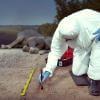














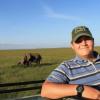







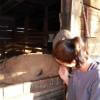

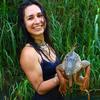
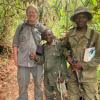



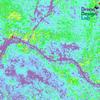

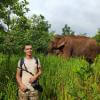
7 August 2025 8:51am
Hi Divya,
Thank you - I've started the training already but have only covered a basic introduction to QGIS so far so if you want to join from next Monday please send me a DM